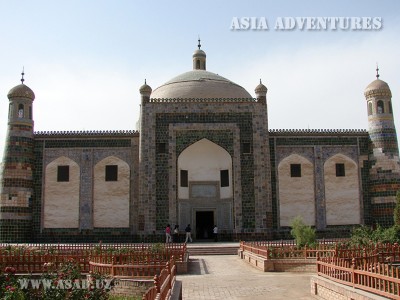
Apak Hoja Tomb, five kilometers northeast of Kashgar an important cultural unit protected by the Xinjiang Autonomous Region. As a tomb of the descendants of an Islamic missionary, it was built around 1640 .The legend has it that seventy-two persons in all of five generations of the same family were buried in the tomb. The first generation buried here was Yusuf Hoja, a celebrated Islam missionary. After he died, his eldest son Apak Hoja carried on the missionary work and became the leader of the famous Islamic sect of white mountaineer during the seventeenth century which seized the power of the Yarkant for a time. Apak Hoja died in 1693 and was buried in the tomb. His reputation was greater than his father"s, so the tomb was renamed "The Apak Hoja Tomb."
The tomb is a group of beautiful and magnificent buildings including the Tomb"s Hall, the Doctrine Teaching Hall, the Grand mosque, small Mosque beside the gate, the gate tower, a pond and orchard. The Tomb"s Hall, with a domeshaped top of seventeen meters in diameter and covered with green glazed tiles outside, is twenty-six meters high and thirty-nine meters long at the base. The hall is high, spacious and columnless. Inside the hall, there is a high terrace on which the tombs are arranged. All the tombs are built of glazed bricks with very beautiful patterns of elegant. Grand mosque is in the west part of the tomb, Ayitijiayi by name, is the place where the Muslim believers conduct service on big days. The Lesser Hall of Prayer and the gate tower are outmost buildings decorated with colorful paintings and elegant brick carvings.
Outside the tomb there is a crystal-clear pond lined by tall trees making the place pleasantly quiet and beautiful. The legend goes that among the Hoja descendants buried here, there was a lady, Yiparhan by name, who was one of the concubines of the Qing Dynasty Emperor Qianlong. She was called Xiangfei in Chinese( fragrant Imperial Concubine) because of the rich delicate fragrance of flower sent forth by her body. After she died, her remains were escorted back to Kashgar by her sister-in-law Sudexiang and was buried in the Apak Hoja Tomb. So, some people call the tomb "the Tomb Xiangfei". But according to textual research, Xiangfei was none other than Rongfei, a concubine of Emperor Qian-long, and she was actually buried in the East Tombs of the Qing Dynasty in Zunhua County of Hubei Province after she died.

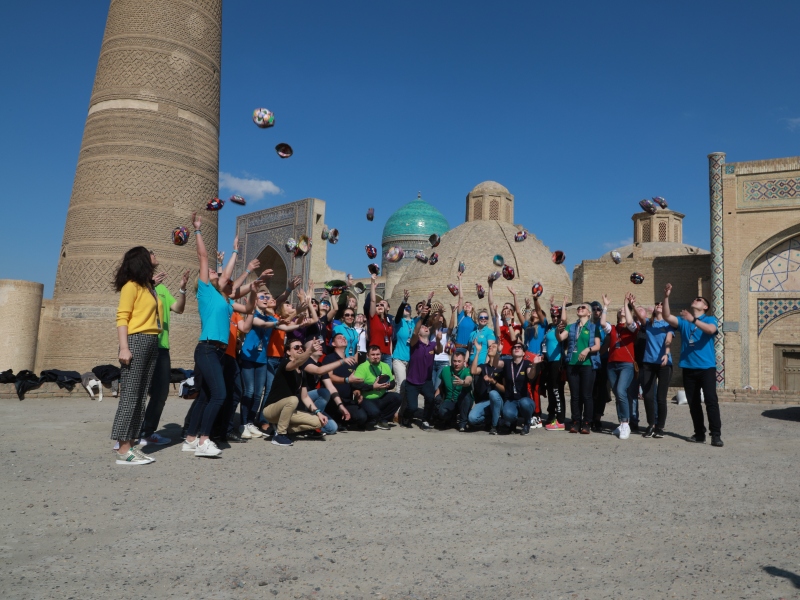 Centralasia Adventures
+998712544100
Centralasia Adventures
+998712544100




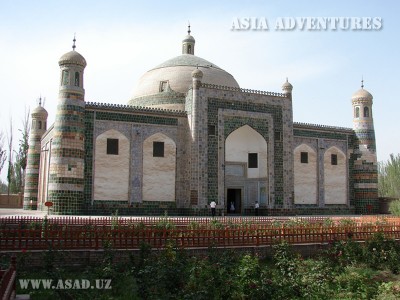
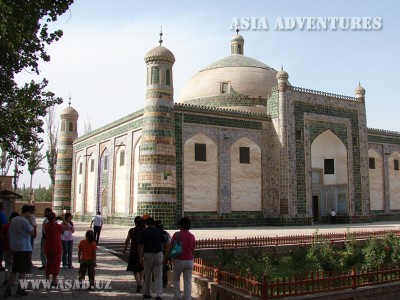
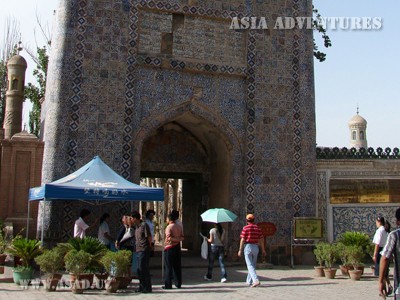
 Posted by
Posted by

